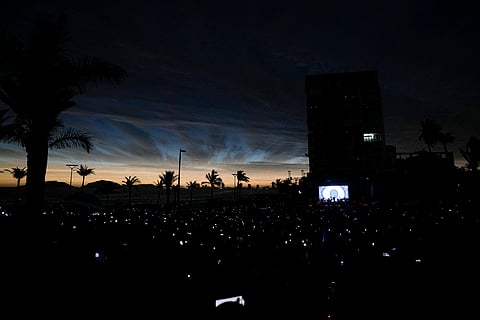The moon covers the sun during a total solar eclipse, as seen from Eagle Pass, Texas.
Total Solar Eclipse is finally here!
Monday will mark a significant event as the total solar eclipse sweeps across North America, a spectacle that hasn't graced the United States in seven years and won't occur again for another two decades, according to astronomers.
Millions of people are anticipated to cast their eyes skyward for the chance to witness the rare alignment of the sun, moon, and Earth, creating a mesmerising celestial display, whether partial or full depending on one's vantage point.
Curiosity about the specifics of this phenomenon is natural. What time does the total solar eclipse commence? Will you be able to see it? And importantly, how can one observe it safely without risking damage to their eyesight? For this, Stay tuned with us for further updates!














